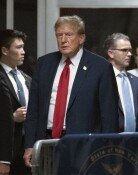Nearly 100 Special Zones in Three Years
Nearly 100 Special Zones in Three Years
Posted September. 29, 2007 03:43,
Nearly 100 special economic zones for regional development (referred to as special zones, hereafter) have been established over the past three years by the current government promoting the notion of a so-called balanced national development.
Many are raising concerns that such reckless establishment of special zones is diluting the initial intent to lay grounds for region-specific development and is leading to negative effects.
Many also criticize that the government, through simultaneous and numerous promotions for industrial towns, renovation towns, and multifunctional administration cities in addition to the special economic zones, is setting the stage for lands nationwide to turn into speculation areas.
On September 28, the government held its 13th meeting of its regional special zone committee under the supervision by Deputy Prime Minister and Finance-Economy Minister Kwon O-kyu and decided to newly designate 10 special zones such as the Yeongdeok Clean Energy Special Zone (in Gyeongbuk Province) and to cancel the designation of Wanju Wine Business Special Zone, in Jeonbuk Province.
This adds nine special zones to the list of government designations and raises the total to 96.
The special zone is a system where the central government eliminates regulations and gives government subsidies in order to nourish local industries of provincial governments.
Since the first designation of six special zones in January 2005 including the Gochang Bokbunja business special zone in Gochang-gun, Jeonbuk, 20 to 30 zones have been added each year.
According to the Ministry of Finance and Economy, the budget the government has subsidized or will subsidize in order to strengthen these special zones amounts to 760 billion won. Special zone projects are carried out with the local governments budget, government subsidies and private capital.
In addition to the 96 special zones, the government has also designated 10 renovation towns and six industrial towns.
As more local governments receive multiple subsidies from two or three sources, some criticize the government for its end-term benevolence policy in light of the short time left till the next presidential election.
On the same day, the Ministry of Transportation and Construction announced that it is promoting a deregulation plan to lower the minimum development area of industrial towns from the current 3.3 million m² (about one million pyeong) to 1.65 million m² (about 500,000 pyeong).
In addition, the Presidential Committee on Balanced National Development recently announced its plans to classify 59 local governments with low development levels as underdeveloped regions and to give privileges to small companies there, such as cutting 70 percent of corporate taxes.
Experts point out that the reckless deployment of policies for balanced development that have not even been verified as effective can give rise to a number of side-effects. Some examples of such side effects are the rash development of land, skyrocketing land prices, and weakened national competitiveness due to reverse discrimination on the Seoul metropolitan area.
Moreover, the prolongation of this trend will turn most of the regions among 234 local governments nationwide, excluding the major metropolises, into special zones, industrial towns, or renovation towns.
jarrett@donga.com higgledy@donga.com
Headline News
- Israel prepares for retaliation against Iran
- Samsung reclaims top spot, surpassing Apple in smartphone market
- 77% of Koreans in 20s and 30s are 'Kangaroo Tribe' due to job crisis
- KBO referees embroiled in controversy over ABS decision concealment
- Inflation, oil price surge put double shock on global economy







